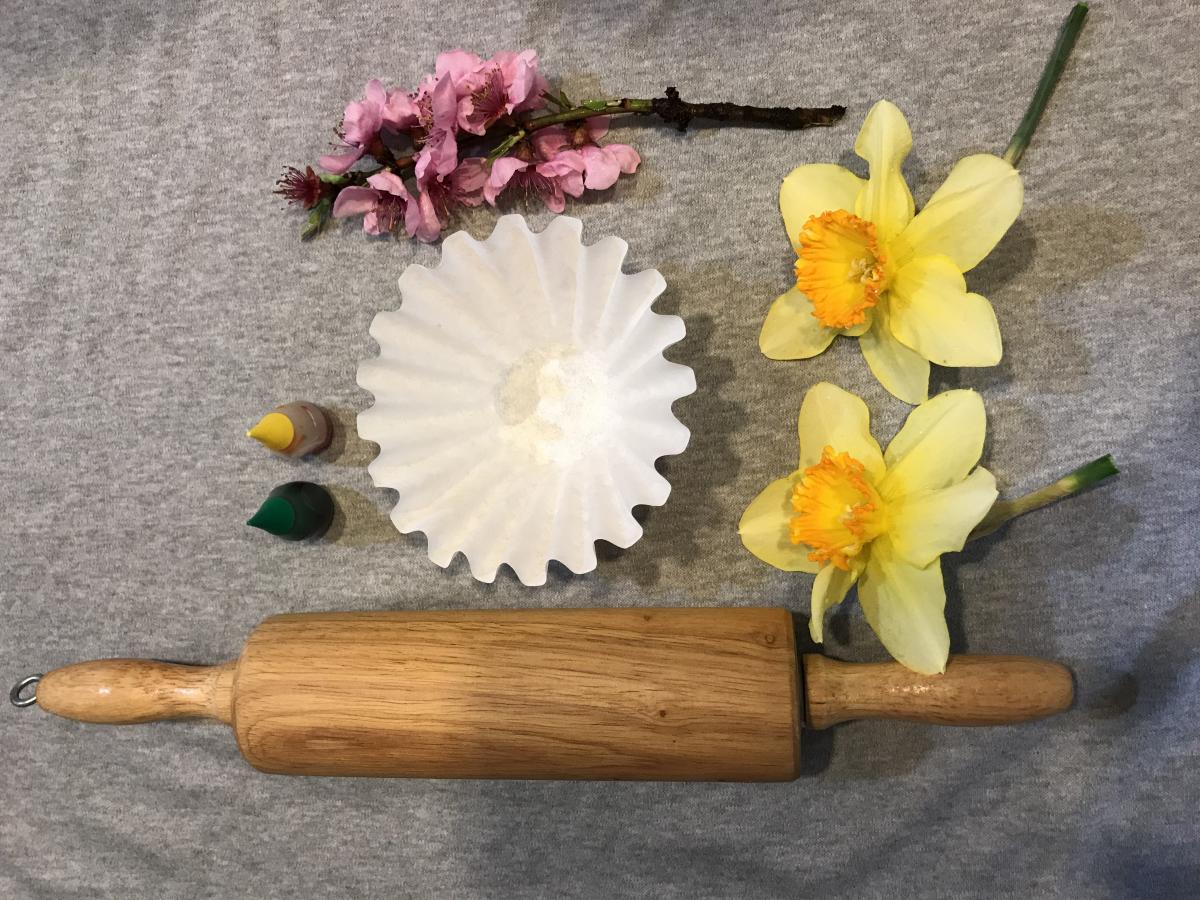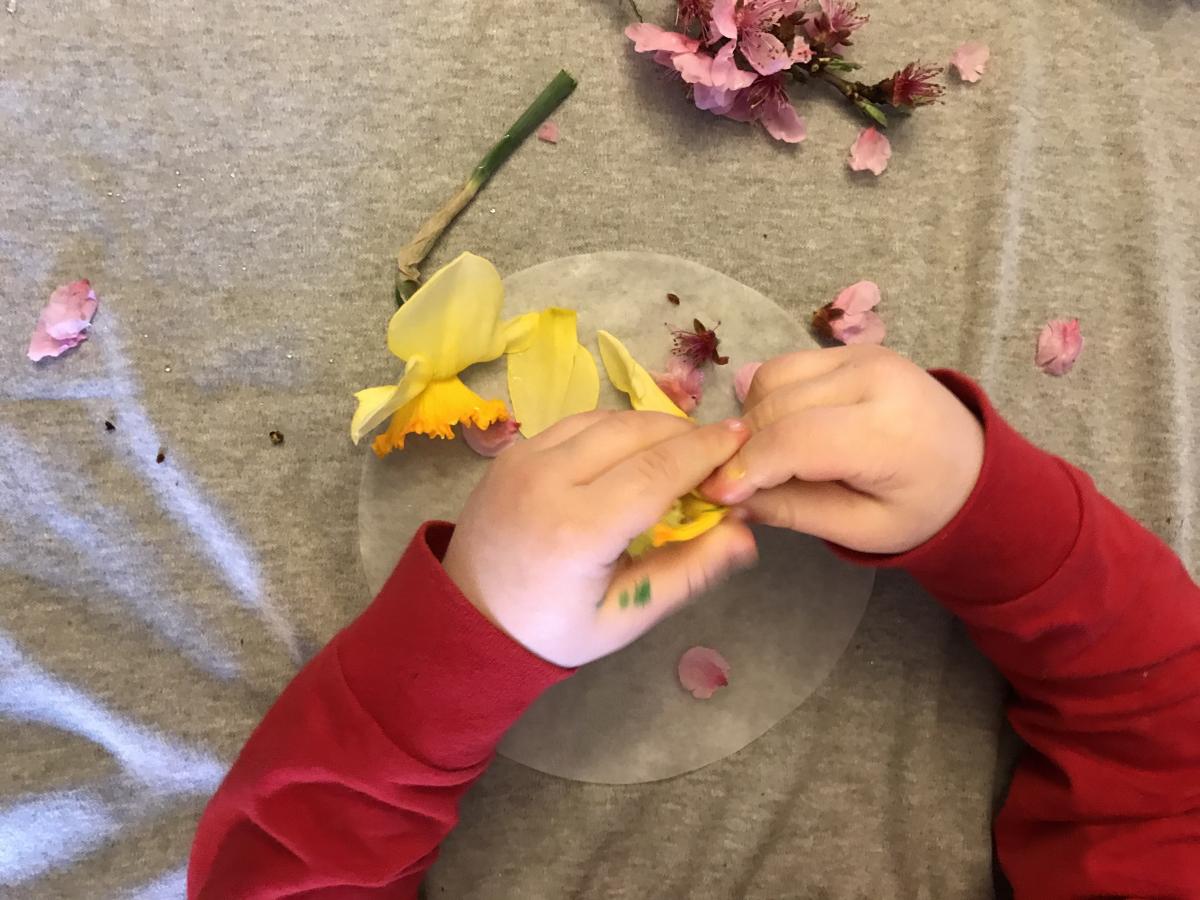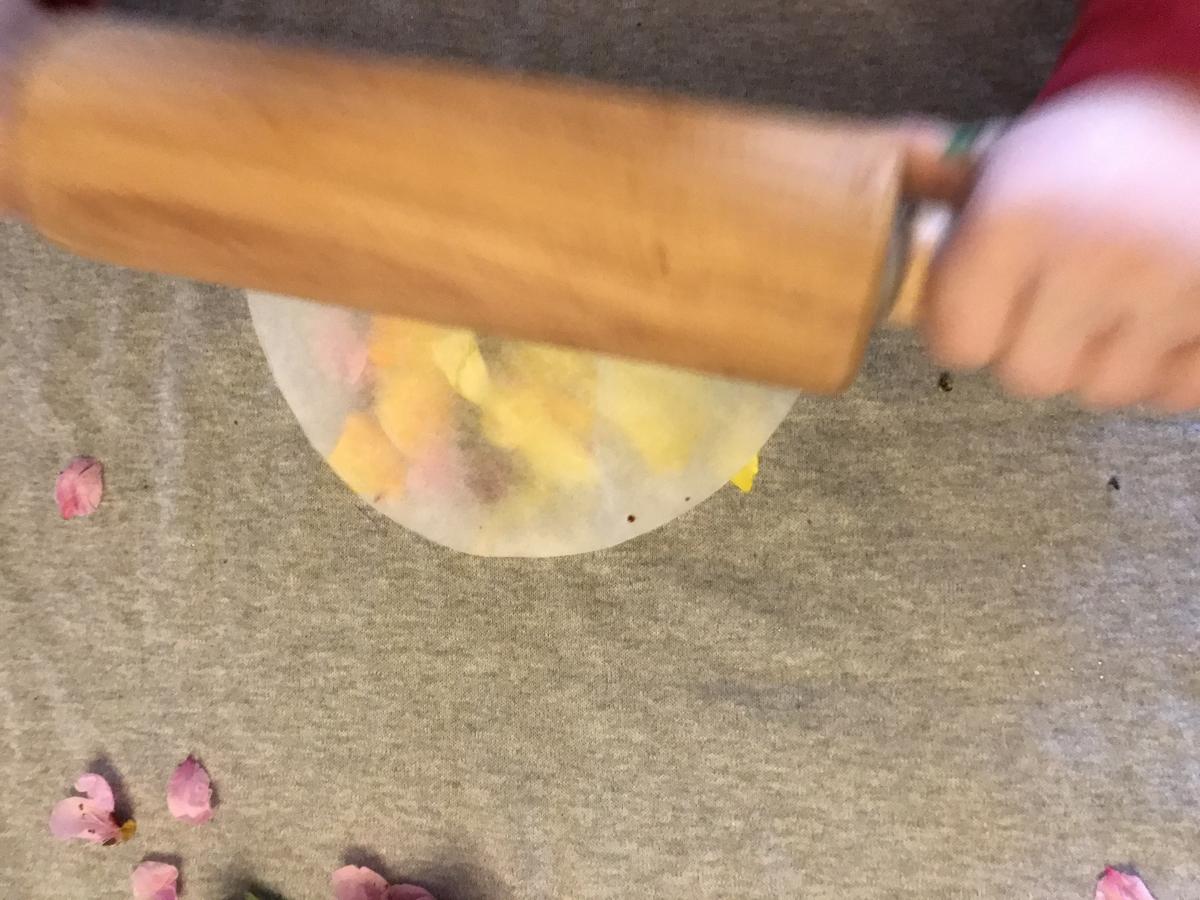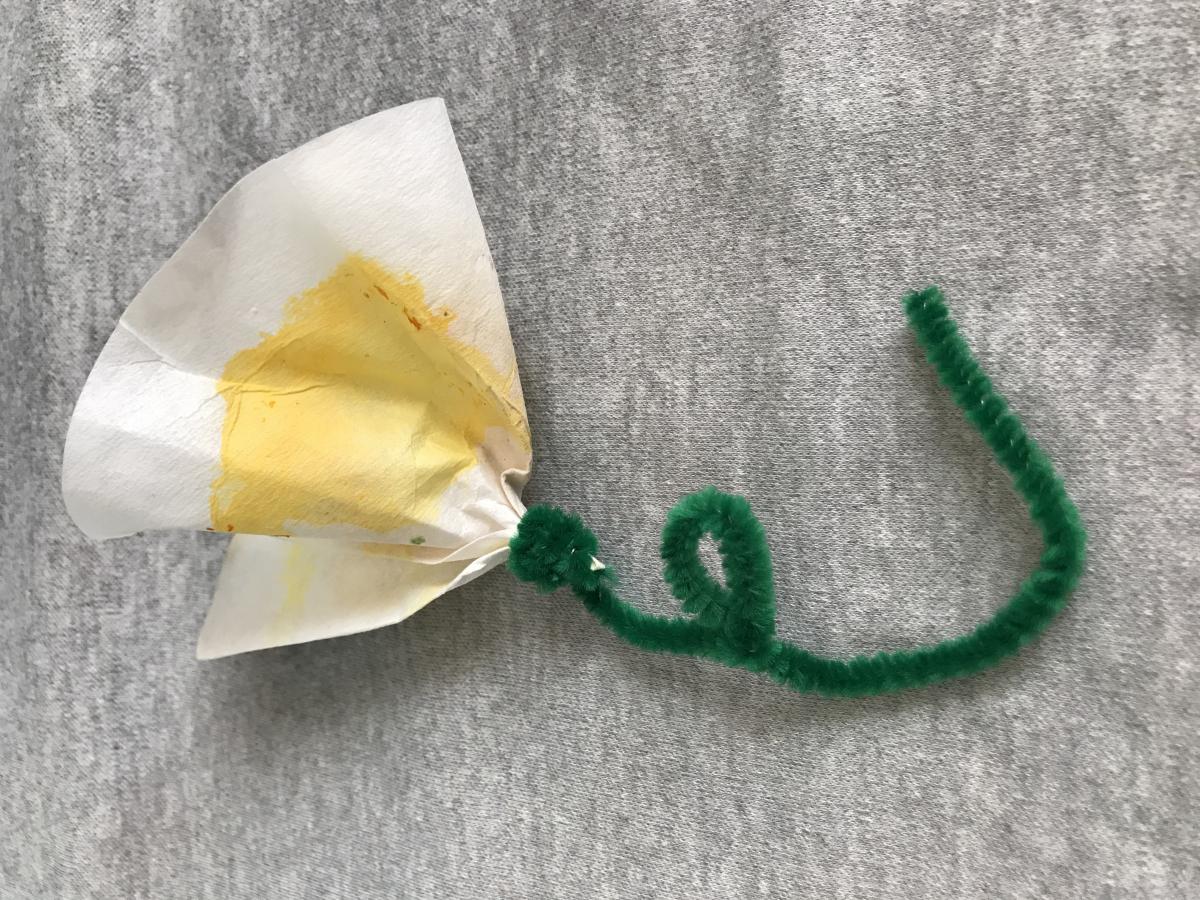
Gloria Kenyon, senior public programs coordinator at SAAM, leads the museum's Handi-hour programs. Since we can't craft as a group at the moment, Gloria offers a simple project you can do at home.
Greetings from your friendly neighborhood craft master!
I hope you’ve all listened to the excellent Sidedoor Podcast episode about Alexander von Humboldt featuring our own brilliant Eleanor Harvey. Inspired by Humboldt’s exploration and his love of art and science this craft rewards exploration, close looking, and patience. (Please do not lick any tree bark or other plants while gathering supplies for these crafts.)
This is a great time of year for this one, especially if you have a yard and flowers in it. If you don’t have access to real flowers, you can still explore the concept of dyeing and make flowers by starting at Step 3.
Difficulty level:1/5
Supplies needed
- Real flowers
- Scissors
- Rolling pin
- Coffee Filters
- Pipe Cleaners
- Liquid food coloring (optional)
You can use any flowers for this one. We have daffodils and peach blossoms in our yard, so went with those. (Step 1) Pick a few flowers, they can be the same or different types. Pull them apart to explore the different sections. Here’s a general diagram of the different parts of the flower.
(Step 2) After you’ve taken the flower apart and explored all the parts, put petals, stems, and leaves in between two coffee filters. Roll over with the rolling pin and see how the colors dye the coffee filter. To add more colors, go on to Step 3. To turn into a flower with the natural dyes, skip ahead to Step 4.
Step 3
Dampen the coffee filter and flatten out. Add drops of food coloring to one side and then fold in half. Place between two pieces of waxed or parchment paper and gently press together to spread colors. Unfold and let dry.
Step 4
Once dry, fold the filter into quarters with a point at one end. Twist a chenille stem around the point to create a stem. Fluff out the rounded edges of the “flower.” Repeat to make a whole bouquet.
Share your flowers and scientific discoveries with us @americanart
This is the third blog post we've published on crafting at home. We began the series with homemade cherry blossom trees and sun prints. We'll be publishing another at-home craft with the craft master soon. In the meantime, check out our video library of crafting projects from past Handi-hour events.




















